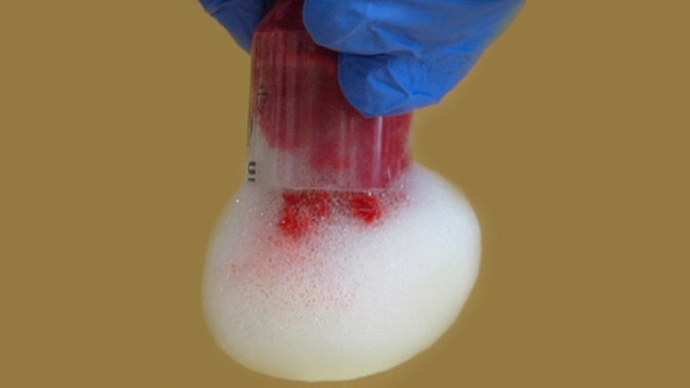Scientists find way to cut blood loss by 90% - by spraying foam made from shrimp shells

Using a material derived from shrimp shells, scientists have developed a foam that can be sprayed directly onto an open wound to quickly stop the bleeding. It could prove vital when treating injuries caused by street violence and military combat.
Injuries and violence account for nearly 1 out of every 10 deaths
worldwide each year, according to the US Centers for Disease
Control and Prevention. As many as 5.8 million people of all
ages and social backgrounds die from violence-related injuries
every year, the health protection agency says.
For some limb injuries, doctors can apply pressure to effectively
halt the bleeding. The problem is that when dealing with certain
injuries – trauma to the torso in particular – compression is not
an option.

Meanwhile, “hemorrhage (severe blood loss) from traumatic injury is a leading cause of death for soldiers in combat and for young civilians,” Matthew Dowling and colleagues at the University of Maryland wrote in the journal ACS Biomaterials Science & Engineering, adding that the majority of hemorrhages that prove fatal are “non-compressible.”
The researchers added: “Currently, there is
no effective way to treat such injuries.”
A solution has been found, however. “In this initial study,
we demonstrate that a sprayable polymer-based foam can be
effective at treating bleeding from soft tissue without the need
for compression.”
The active material in the foam is a modified chitosan (a
biopolymer derived from the shells of shrimp and other
crustaceans), which “physically connects blood cells into
clusters via hydrophobic interactions.”
When the unique foam is sprayed into an open cavity created by
injury, it expands and forms a self-supporting barrier that
counteracts the expulsion of blood from the cavity, the
researchers say.
They have already tested their sprayed foam for its ability to
arrest bleeding from an injury to the liver in pigs. The bleeding
was stopped “within minutes” and without the need for
external compression, the researchers reported. Blood loss was
cut by 90 percent.













